Reference Architecture Cheat Sheet

A well-designed architecture is key. It underpins scalable, maintainable, and efficient software systems. This is where software architecture references play a critical role. Architects and developers can avoid reinventing the wheel by using best practices, patterns, and frameworks. They can then focus on building reliable, secure, and future-proof solutions.
This article will explore software architecture references. It will cover their importance and how to use them to design effective solutions for your business needs.
What is a Reference Architecture?
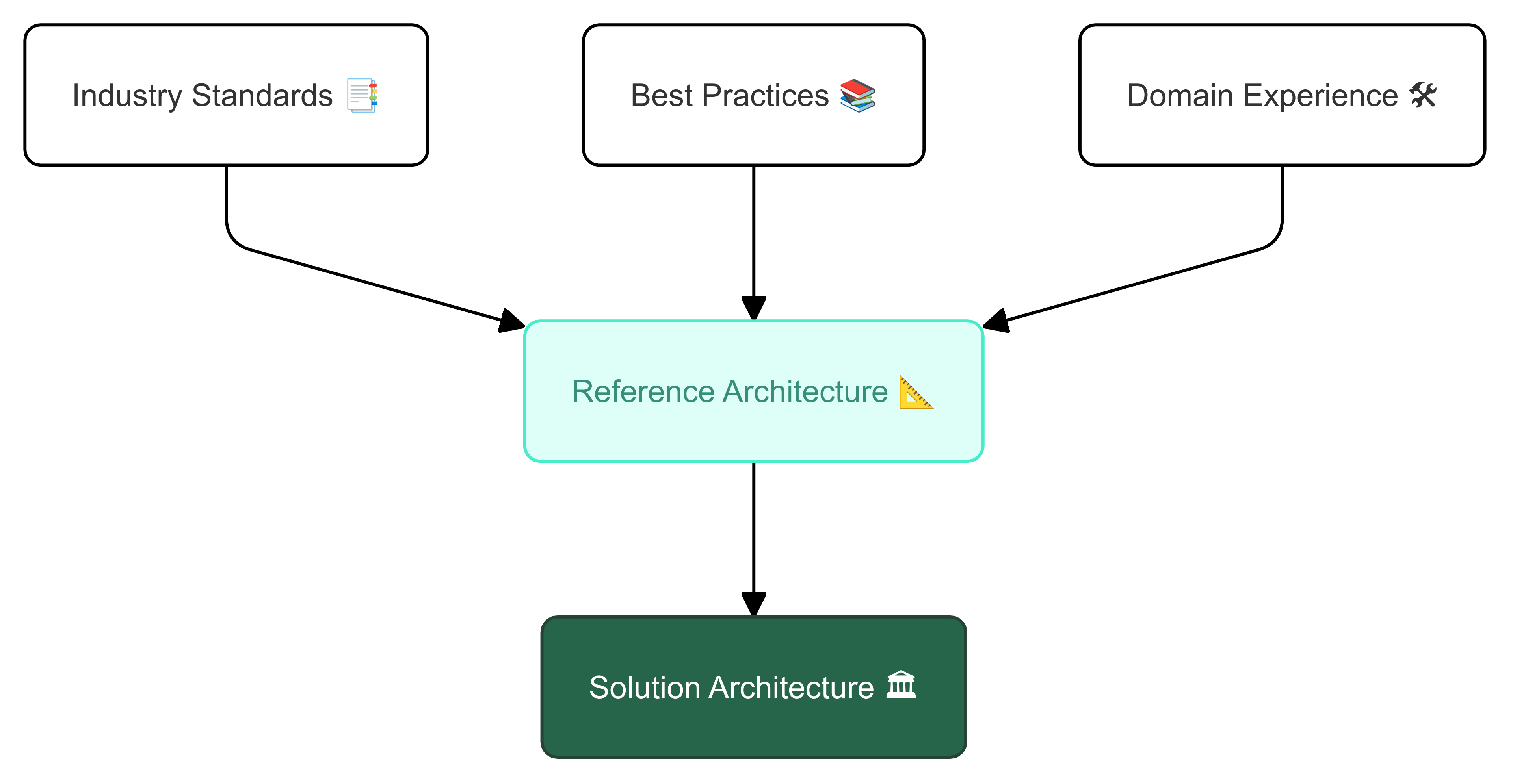
Software architecture references are templates, patterns, or frameworks. They provide standardized guidelines for structuring software systems. These references help ensure that solutions are consistent, scalable, and maintainable. They often include best practices, docs, and proven architectural patterns. They work in real-world scenarios.
Here are some essential resources to explore for architecture references and best practices:
Software Architecture styles
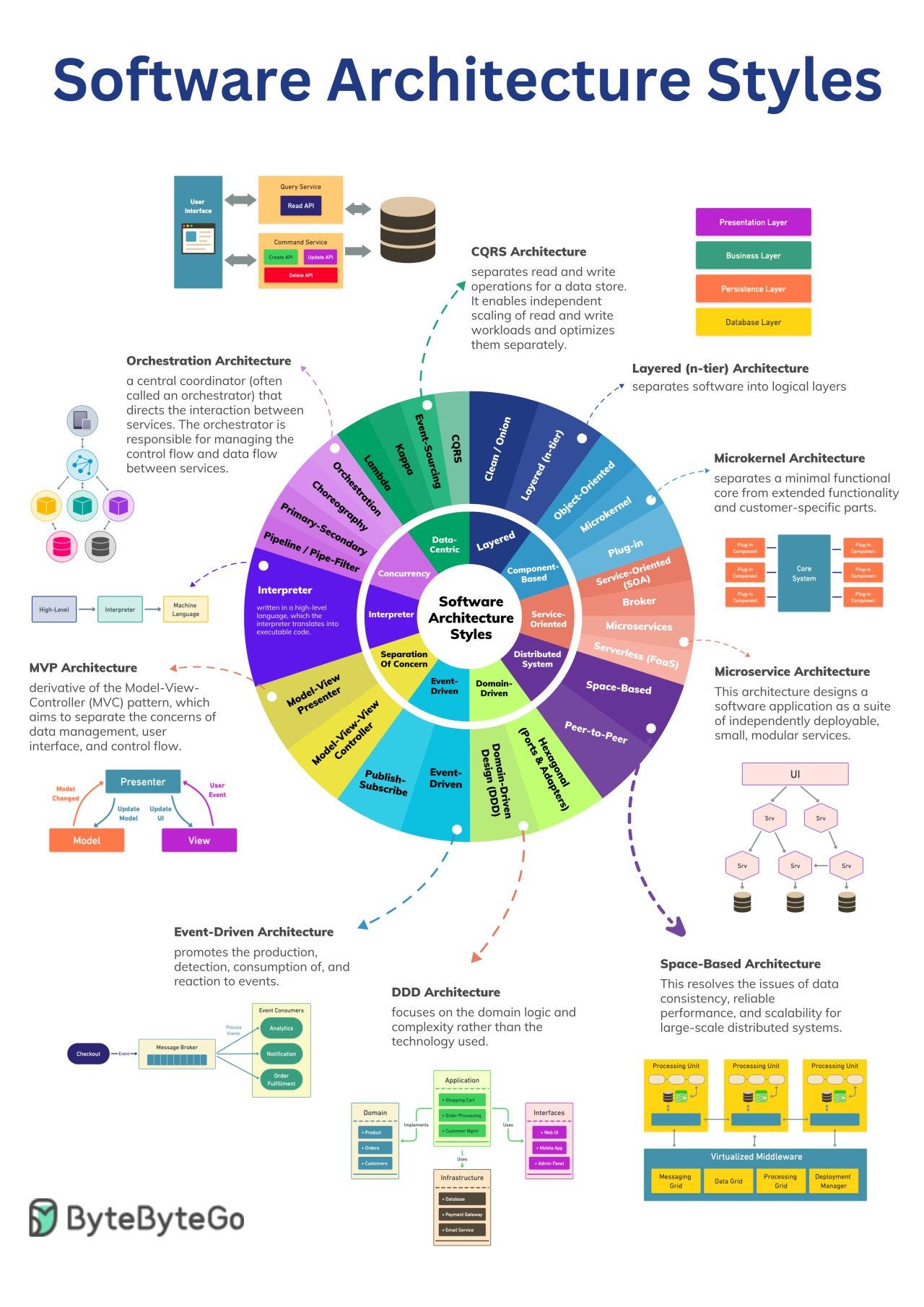
Also, we recommend browse our article: Top 10 Software Architecture Styles You Should Know
Architecture frameworks

- The Open Group Architecture Framework (TOGAF) - A comprehensive guide to enterprise architecture.
- AWS Well-Architected Framework - Best practices for building scalable and secure systems in the cloud.
- Microsoft Azure Architecture Center - Guidelines for building scalable and secure applications on Azure.
- Azure Well-Architected Framework - Best practices for building scalable and secure systems in the cloud.
- Software Engineering Institute (SEI)- research and development center at Carnegie Mellon University, primarily focused on advancing software engineering principles and practices. SEI helps organizations improve their software systems and capabilities by offering expertise in cybersecurity, software architecture, and process improvement. SEI Software Architecture Principles and Practices Overview Training
Cloud Architecture References

- Browse Azure Architectures - References Architectures for Azure.
- SAP Reference Architectures - Catalog of different architecture patterns that can be implemented using SAP Business Technology Platform services.
- Google Cloud Architectures - References Architectures for GCP.
- AWS Reference Architecture Examples and Best Practice - References Architectures for AWS.
Design Patterns & Best Practices

- Best Practices for Effective Software Architecture Documentation
- 6 Steps to scale your application in the cloud
- System Design Blueprint CheatSheet
- Catalog of Patterns of Enterprise Application Architecture - En version / Ru Version
- Design patterns for Cloud-based and microservice applications
- The Twelve-Factor App - A methodology for building robust cloud-native applications.
- Microservices.io - Patterns and best practices for building microservices-based architectures.
- Arcitura - Catalog of patterns.
- GoF Design Patterns
- Cheat Sheets - Articles in our blog about Cheat Sheets
- Common Interview Questions - Articles in our blog about Common Interview Questions
- Software Architecture Articles - Articles in our blog about Software Architecture
Architecture Tactics
Tactics can be used in both design and analysis. They can be used in the design process to make decisions or, more commonly, to modify an architectural pattern. In this way, tactics aid in enumerating and choosing among design decisions.
Availability
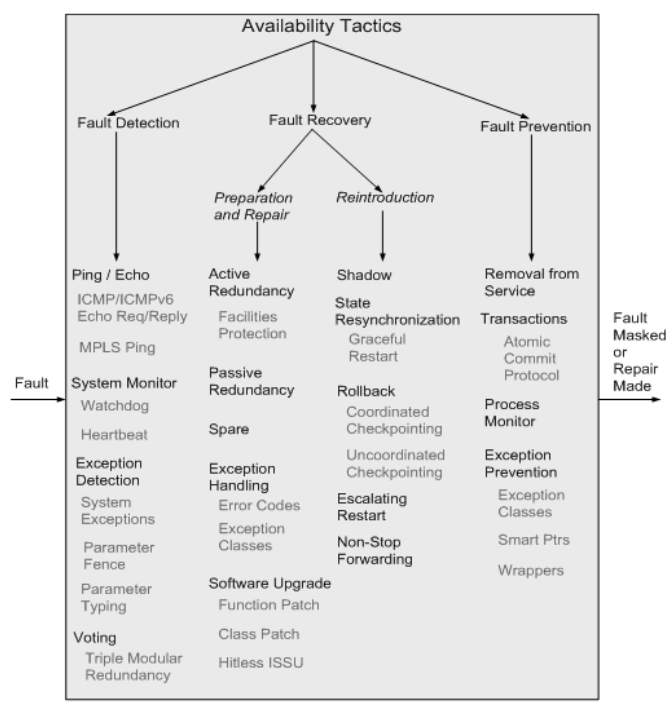
Diagram showing availability tactics designed to keep systems operational by detecting, recovering from, and preventing faults. Techniques include ping/echo, heartbeats, redundancy methods like active and passive, and strategies like checkpoint/rollback to maintain system reliability.
Modifiability
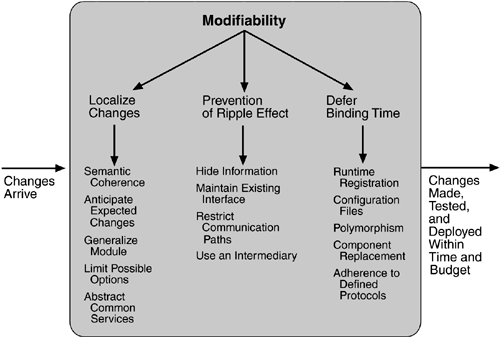
Showing tactics for enhancing software modifiability, including methods to localize modifications, prevent ripple effects, and defer binding time, all aimed to reduce system changes' impact.
Performance
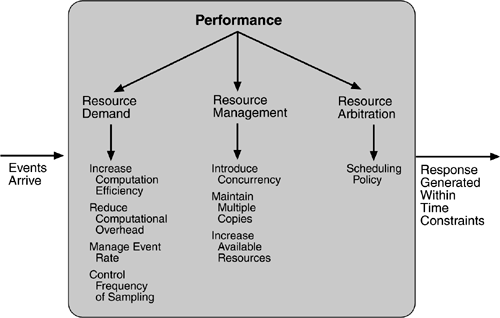
Diagram showing performance tactics aimed at improving response times in systems, focusing on reducing resource demand, improving resource management, and optimizing resource arbitration to handle latency and blocked time issues
Security
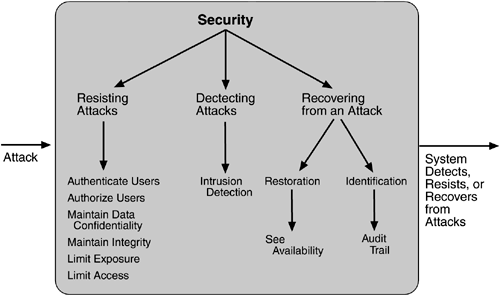
Diagram illustrating security tactics, which focus on resisting, detecting, and recovering from attacks. Key strategies include authentication, authorization, encryption, intrusion detection, and audit trails to protect and restore systems after attacks
Testability
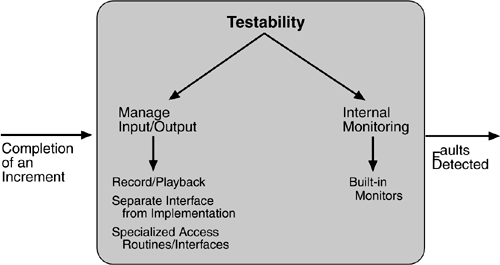
Diagram highlighting testability tactics, focusing on providing input/output and internal monitoring. These tactics aim to simplify software testing by using techniques like record/playback, separating interfaces, and built-in monitors to enhance visibility and control during testing.
Usability

Diagram illustrating usability tactics, focusing on improving user interaction during system runtime and supporting interface design at development time. Key tactics include maintaining models of the task, user, and system to enhance usability, and separating the user interface from the application for easier updates.
Conclusion
Software architecture references are valuable tools for creating scalable, easy-to-maintain, and robust systems. You might apply them to large cloud apps and small business solutions, improve design choices, lower risks, and boost team communication. You can build software that meets today's needs and adapts for the future.
